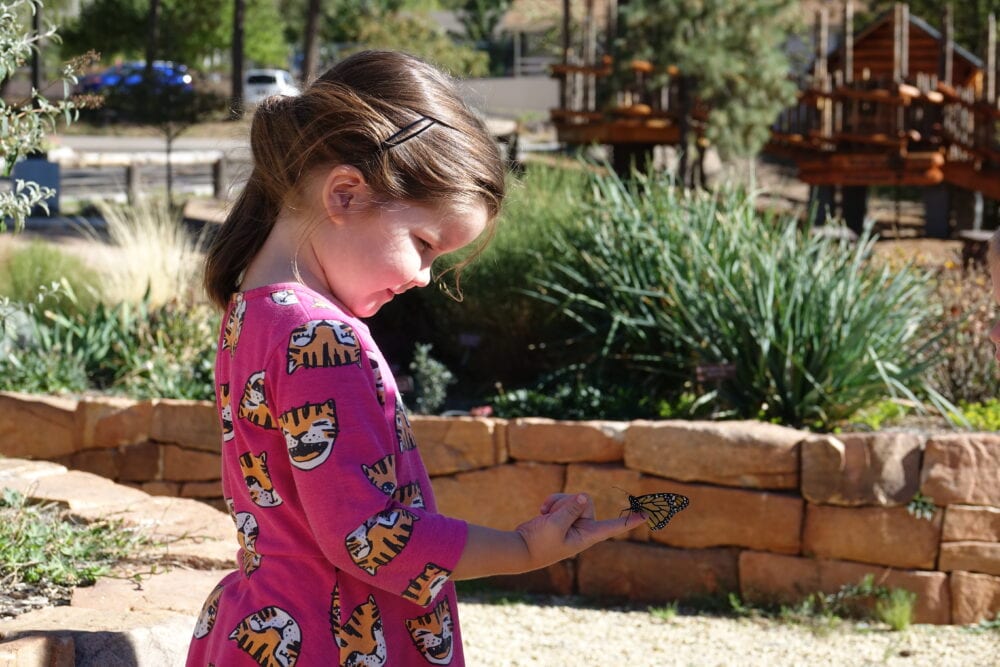
By Jenna Stanek
Monarch butterflies (Danaus plexippus) have declined by an estimated 80% over the past 20 years, primarily due to habitat conversion, insecticide and herbicide application, and eradication of milkweed plants. In 2014, they were petitioned to be listed as threatened under the Endangered Species Act. The U.S. Fish and Wildlife Service determined that federally protecting the Monarch butterfly may be warranted. Currently, they are conducting a status review of the species and are required by law to reach a decision about federal protection by June 2019.
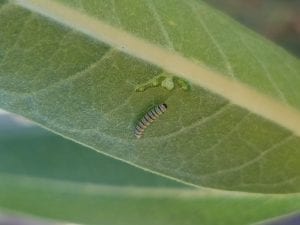
Monarch butterflies migrate from their wintering grounds along the coast of California and Mexico to their breeding grounds in the northern and central part of the U.S. and back again over five generations. The Monarch population east of the Rocky Mountains winters in Mexico and the population west of the Rocky Mountains winters along the coast of California. However, based on tagging efforts the southwestern Monarch populations seemingly go to either. New Mexico, in particular, has a dearth of information on where their Monarch populations go for the winter.
Monarch butterflies lay their eggs on milkweed (Asclepias spp.) plants and this is the only type of plant their caterpillars can consume. Los Alamos County has five different native milkweed species, including Asclepias tuberosa which is sold at Petree Garden Center and is a beautiful perennial with orange flowers. In Los Alamos County, no one has documented the phenology of Monarchs. There are reports of adult population increases in August and migration in September, but no observations of caterpillars or breeding activity.
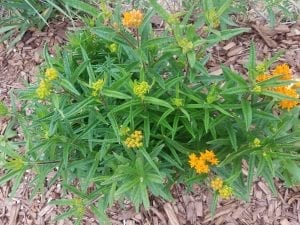
On August 20, 2018, Brent Thompson and I observed a tattered, older looking female Monarch butterfly laying eggs on Horsetail Milkweed (Asclepias subverticillata), a species that commonly grows along the roadsides in the Los Alamos area. When we observed the patch of milkweed plants closer, we found three Monarch Butterfly eggs. Because the milkweed was along the roadside and could potentially be mowed for fire prevention we decided to collect the eggs and raise them.
Once the eggs hatched, we thought it would be a great idea to see if the Pajarito Environmental Education Center (PEEC) would be interested in hosting the Monarch caterpillars at the Los Alamos Nature Center to help spread educational awareness about this once common and iconic butterfly. Three tiny Monarch caterpillars and milkweed for them to munch on was placed on display in the nature center’s wildlife observation room on August 25 so visitors could see these caterpillars grow and enter the chrysalis stage over the course of several weeks.
PEEC employees were ecstatic about our finding and put us in touch with Steve Cary, the author of the book Butterfly Landscapes of New Mexico. He suggested we participate in the tagging effort of the Southwest Monarch Study where they are researching the migration and breeding patterns of Monarch butterflies in the southwestern United States.
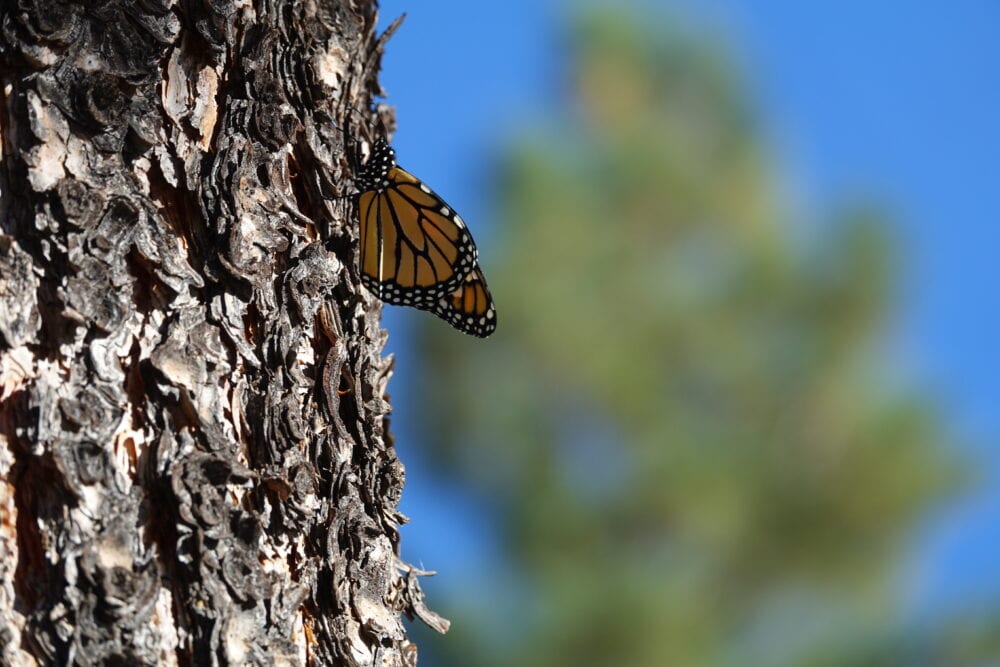
Six Monarch butterflies have been tagged and released since these initial eggs were found. Additionally, we held a butterfly release event at the nature center and released two of the three Monarchs that were raised there on September 24. We talked about Monarch butterfly phenology and the importance of planting milkweed on their breeding grounds. Two of the children who were at the release and correctly answered questions about Monarchs named the butterflies Bob and Jessica before they were released into the gardens.
Sometimes early conservation efforts can prevent the need to list a species under the Endangered Species Act and encouraging people to plant milkweed is one of the easiest ways to positively impact Monarch populations. Learn more about Monarchs at the Southwest Monarch Study.

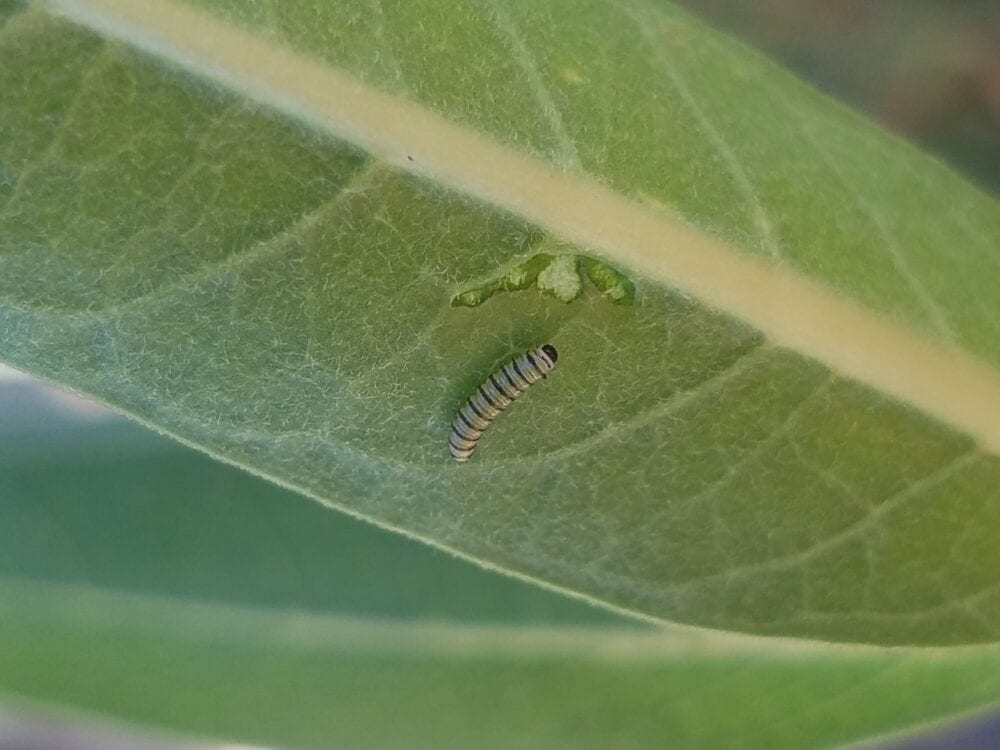
Excellent post! Thanks for all the info.